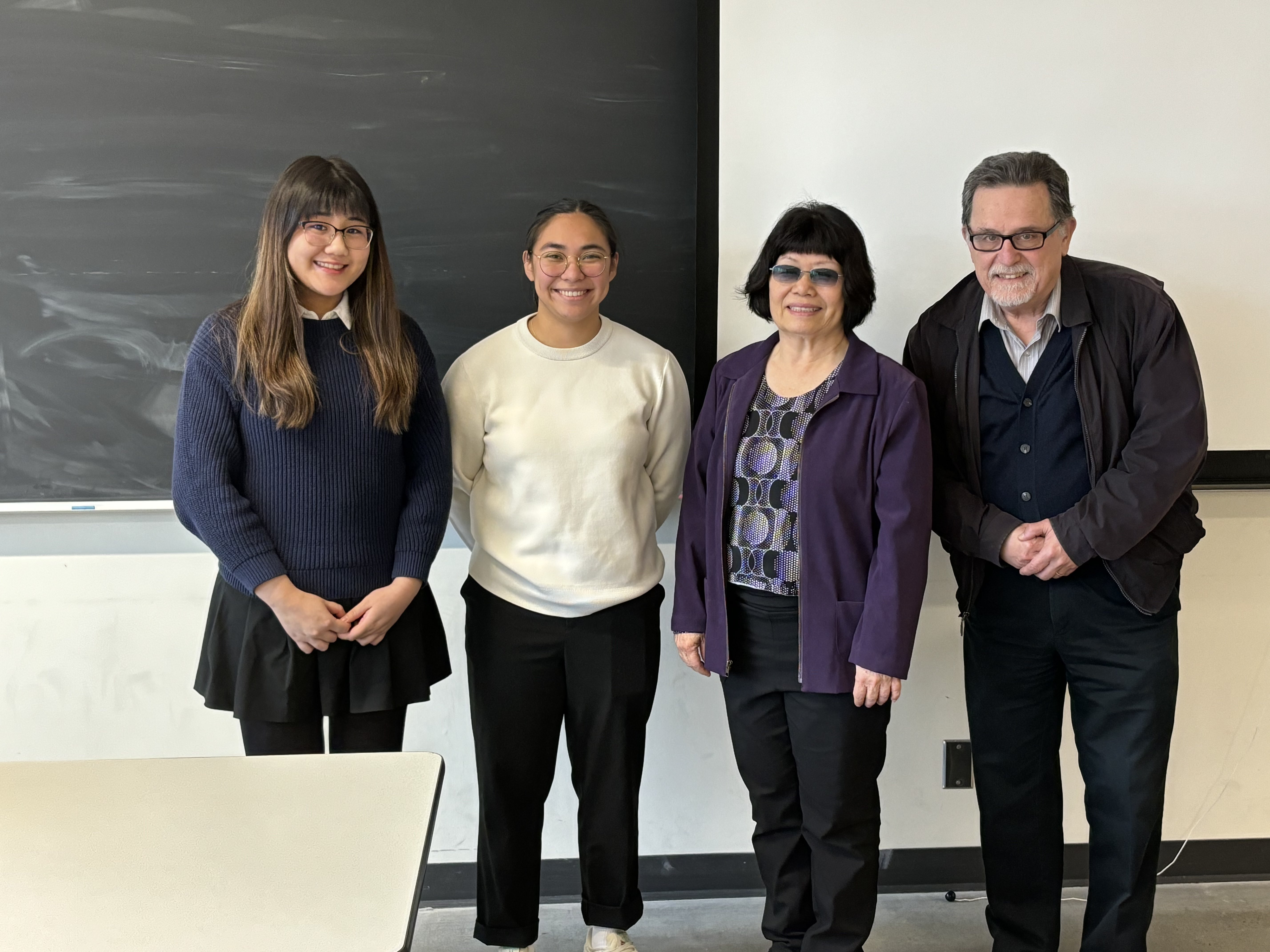Chapter 11 Hosting Guest Speakers
Project by: Dina Zeng and Michaella Quebral.
\(\textbf{Summary:}\) During the month of March 2024, we invited four individuals to hold a presentation: Dr. Polly Yu, Ari Blondal, Dr. Fan Chung, and Dr. Richard Anstee. Each presenter was asked to talk about Ramsey Theory or how Ramsey Theory is used in their field. Over the course of the project, much of the contribution was done by Dina, such as the email correspondences to the speakers, the mid–semester presentation, and organizing Dr. Chung's transportation to SFU. Michaella was responsible for the final written report and the idea of a pre–made list of questions to use during the Question and Answer sessions. Both had a chance to introduce the speakers and facilitate the Question and Answer sessions.

From meeting and listening to the four guest speakers, there were 3 main takeaways that came out of this project. One outcome was that we were able to showcase the uses of Ramsey Theory in other fields of study. Dr. Anstee and Ari all allowed the class to see Ramsey Theory outside of the context of our class lessons and see the more practical uses of Ramsey Theory. Dr. Anstee specifically described the discipline crossover between Ramsey theory and combinatorics. One method used was creating maximums and minimums to establish boundaries that the forbidden matrix could be in as shown in slides 19 of his presentation, similar to the Erdős–Szekeres theorem talked about in class. Ari talked on the use of Ramsey theory in computer science. One of his examples described a similar use of general arithmetic progressions to solve problems, which is similar to the Van der Waerden theorem. However, the Van der Waerden theorem uses a monochromatic arithmetic progression rather than the theorem Ari showed uses a general arithmetic progression. Dr. Yu's presentation did not directly use Ramsey Theory. However, she displayed the uses and overlaps of math and natural science as seen in the slide below.


Another positive outcome was that we were able to expose our peers to other successful individuals in the field of mathematics that are closer in age to us. It?s not very often undergrads can have very personable conversations with well established people in their fields. Having both Dr. Yu, who has her Ph.D. and is working for Harvard, as well as a new Ph.D. student in Ari was a great opportunity for our peers. The Q&A session with both of them held the most participation of the three days and both kindly left their contact information with the class for those who wanted to keep in touch. Each also gave useful advice to those that did ask questions at the end. When asked if they had any tips from undergrad students thinking of going into graduate studies. Dr. Yu said that it is absolutely worth trying but advised not to go broke doing it. Ari answered similarly, encouraging us to give it a try if that is what you?re interested in and to start building connections now with others.

The last outcome and the bonus of the project was the opportunity to get to personally know one of the big names in Ramsey Theory. Getting to hear Dr. Chung share gave the class the chance to listen to someone who was an active player in the progress of this field. During the introduction, it was pointed out that we had just touched on both her and Dr. Graham?s improvement on the Erdős–Szekeres boundaries the week prior. This was to highlight that the people we are learning about are not just these names that we have to memorize, but individuals whose creativity furthered a growing field of study. She talked about a couple problems that were still considered unsolved, as they are problems that do not have a finite answer but are found within an upper and lower bound. For example, Erdős–Szekeres? Happy Ending Problem. As she held her presentation, you could also see her reminiscing on her friendships with both Dr. Ron Graham and Dr. Paul Erdős. Overall, the project was a success and was a fun learning experience.


